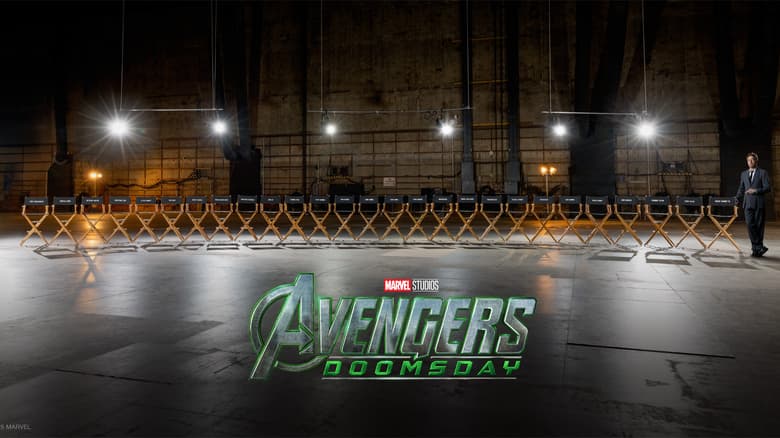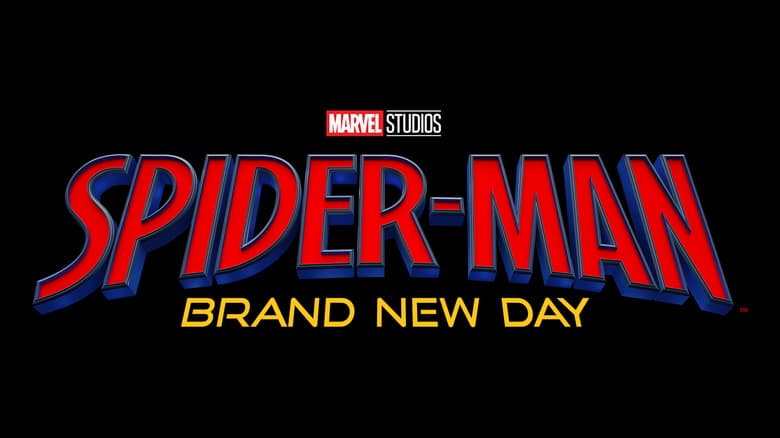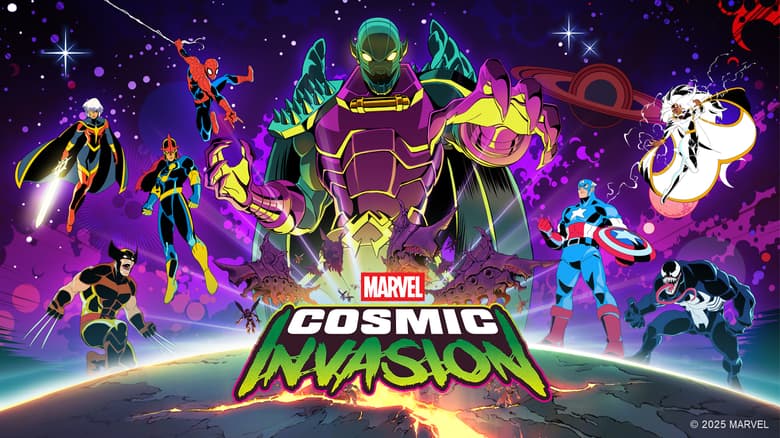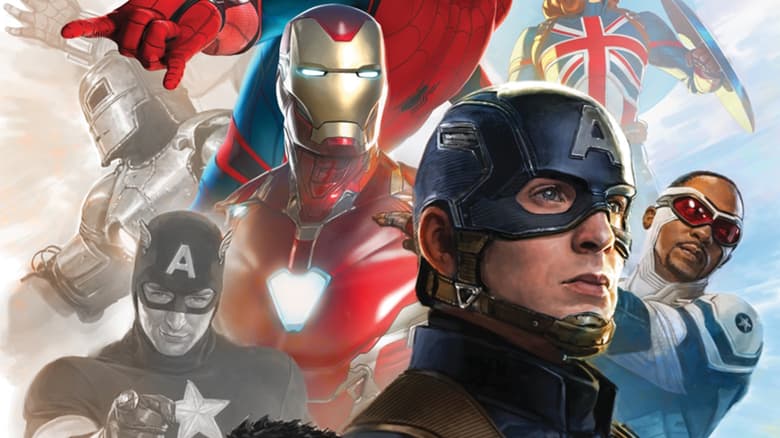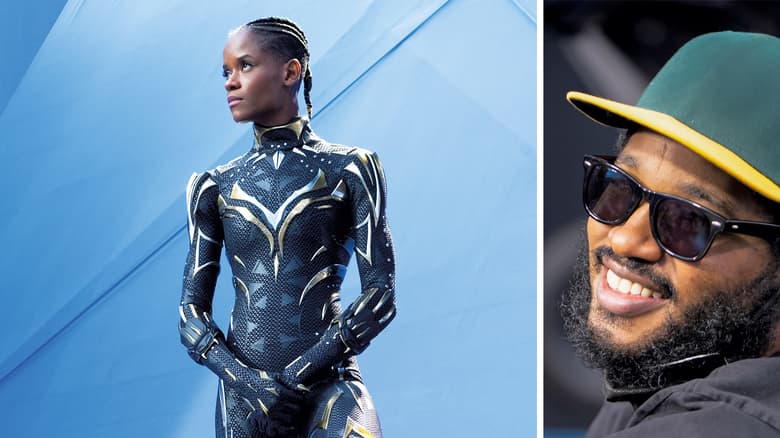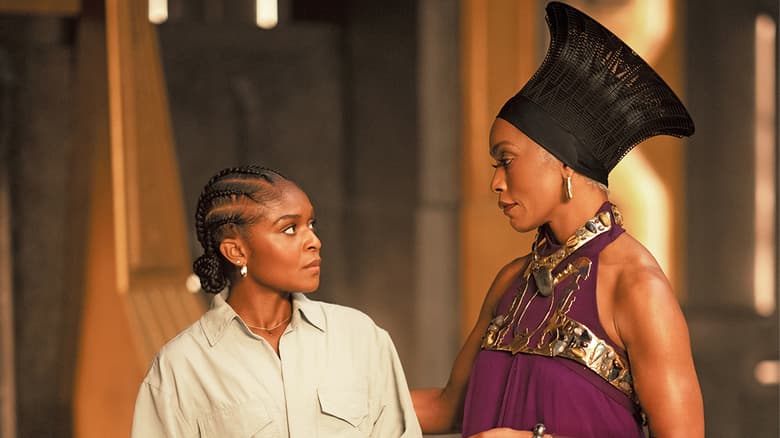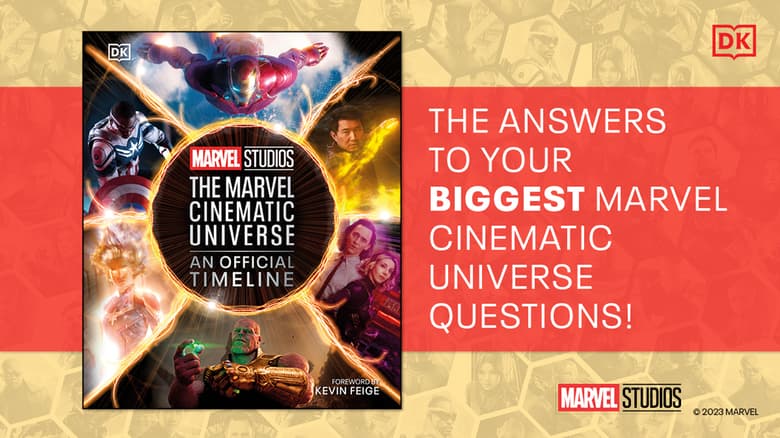A Deep Dive on Talokan's Underwater Society with 'Black Panther: Wakanda Forever's' Hair & Makeup Leads
'Black Panther: Wakanda Forever' Hair Department Head Camille Friend and Makeup Department Head Joel Harlow break down the challenges of building an underwater world like Talokan.
Marvel Studios' Black Panther: Wakanda Forever took the Marvel Cinematic Universe to all-new depths by introducing Talokan, an underwater society established by the Mayan diaspora and ruled by its fierce leader Namor. In order to create a believable undersea world on screen, the people behind the film—including Hair Department Head Camille Friend and Makeup Department Head Joel Harlow—had to get creative, while also respecting the culture from which their characters came.
On an episode of This Week in Marvel, Friend and Harlow discussed the process behind many of the creative choices in Black Panther: Wakanda Forever, including the trials and errors of building Talokan. They also recalled the struggle of returning to Wakanda without Chadwick Boseman, shared the joy of creating Queen Ramonda's look with Oscar Awards nominee Angela Bassett, and more.
"It felt like coming home," Harlow said of his work on Black Panther: Wakanda Forever. "Certainly, there was a weight to the film, because we had lost Chad [Boseman]. But very quickly, I think, it started to feel, again, like family. Even though the workload on this increased exponentially, I had a lot of my same makeup artists come back, so we just kind of fell right back into a groove. And working with Camille, that relationship is very strong, since the first film. So I think we kind of leaned on each other a bit to start designing the new characters."
"Certainly, we had done a lot of work in the world of Wakanda for the first film, so all of that was still very relevant and very useful in expanding Wakanda, but then we had Talokan and the Talokanil," he continued. "We were jumping into an entirely new world of characters. It's always a great collaboration. So it felt good. It was heartwarming."
"I think, as Joel said, in the beginning of this movie, [it] was very difficult because, everybody, we hadn't been together and Chad had passed and it's like, 'How are we going to make another movie?' I even asked Ryan [Coogler]; I was like, 'How are we making another movie?'" Friend recalled. "The first couple of months were difficult for me, because I was still in my head about it. But I think it was good when we all went to Chadwick's—we went to his burial site. Ryan and [producer] Nate Moore, they took us over there, and I think that was a good day of closure for all of us. It really, I think, re-gelled us all. Then, once we got back, it was back to work."
"This is the sequel that probably might not have happened if it wasn't for Marvel. They could have scrapped it. I mean, when you lose your star, what do you do? So I feel really fortunate that we did this movie, that we gave honor to Chad," she added. "But then, we have so many great new characters that we got to even explore their origin stories, from the Talokanil and a couple other characters. We got to really open up a whole new world of Marvel, and that's always fun for us."
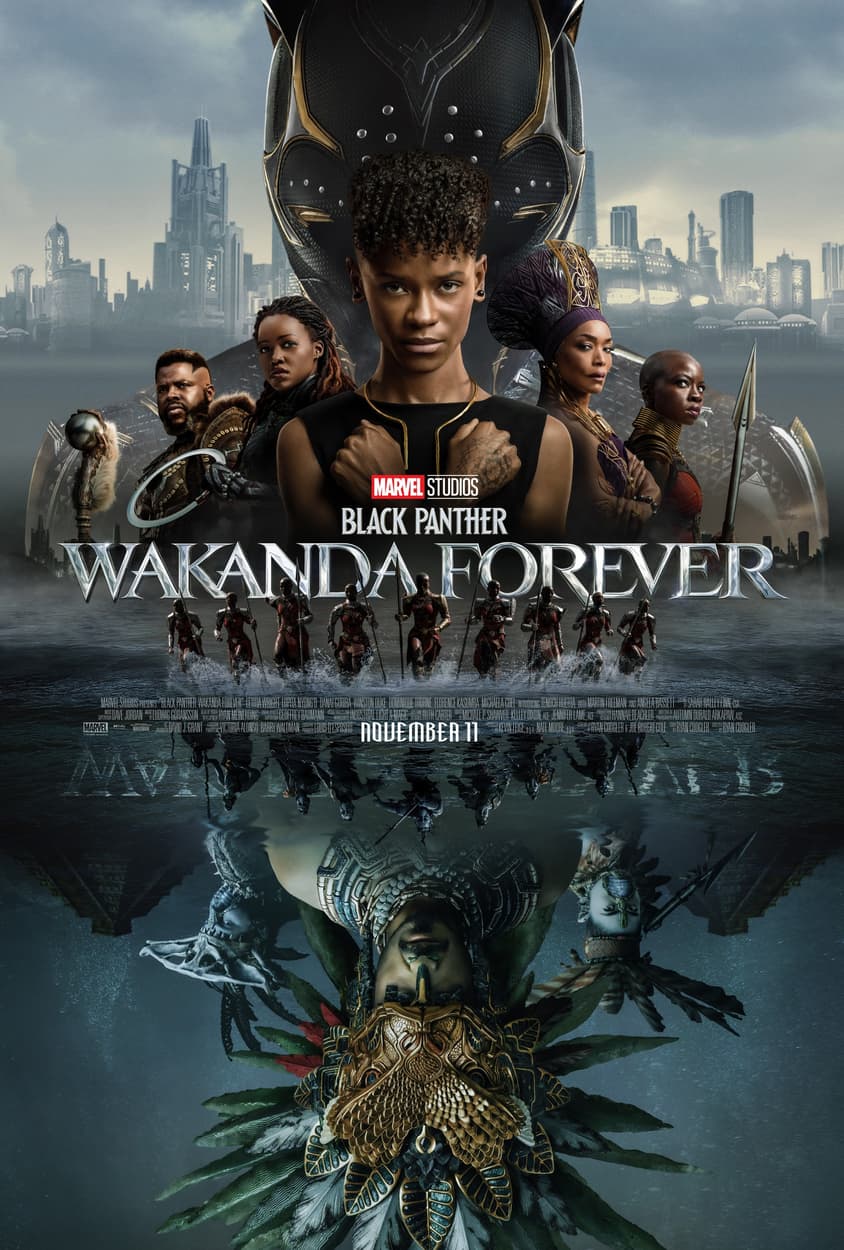
On the subject of that whole new world, Harlow broke down some of the particular challenges that arrived with the Talokanil. "When they breached the surface of the water and their skin tone turns blue, those days were definitely the most difficult, because you've got very scantily clad warriors in complete body makeup fighting in the water. So there's a lot of abrading of… the skin and the makeup," he explained. "Then we've got these prosthetic pieces that live on their necks and on their face. There's gills on their neck. There's a prosthetic gasket that's got 11 colors in it to simulate jade and gold. Jade is not an easy thing to paint, because it's got so many striations in it. We had to paint all of these silicone pieces to look like jade because we couldn't use anything rigid because, it's in the center of their face and they're talking and moving. Same with their necks; they're probably the highest movement point on the body. It was a lot of work."
"It was a lot of very early days, early in the morning. We'd start at 2:30-3 in the morning. Our stunt team, who I continue to take my hat off to, came in at that time. We're all bundled up, because this is Atlanta in the winter, and it gets cold. It's really cold. So we're all bundled up and painting. We were rolling paint on our stunt people and feeling guilty the whole time because you're so warm. You know that they're going out and we're going to have to spritz them with cold water—or warm water, but it'll instantly turn cold," he said. "So it's a lot of work in the morning and then it's a lot of work maintaining throughout the day, because Geoff Baumann—who was our VFX supervisor—did not have a long time on post. So anything we could correct in camera saved him having to go in and touch up areas where the blue had sort of worn away or what have you after the fact."
"Initially, when we had our camera test, we really learned a lot about what we could do or what we couldn't do," Friend recalled. "So the first camera test, when they got in the water, the problem was we had product in the wigs, and all of a sudden—when they got in the water—a big white cloud of product came out. It's like, 'Oh, great!' And they're keeping the hair up. So after the first camera test, Nate Moore looked at me...and was like, 'What are you going to do?' I was like, 'Don't worry! We're going to figure it out.' That's why camera tests and all those things are really important."
"So once we figured out, 'Okay, we can't put product,' how do we keep the hair up? So we came out with basically a solution, which is spearmint gum, which is a glue that we put on wigs. Then we diluted it with alcohol and we made it like a hairspray. So we made basically a glue hairspray to keep the hair in place. Also, going in and sewing the hair down, so it will stay up; adding rubber bands, adding all these components, so when they get in the water, the hair would still look really great," she continued. "So that's how we worked it, because we just had so many people, hairpieces, wigs—and I'm going to say, in Atlanta, probably all the jet black hair color that was on anybody's shelf, we probably bought it."
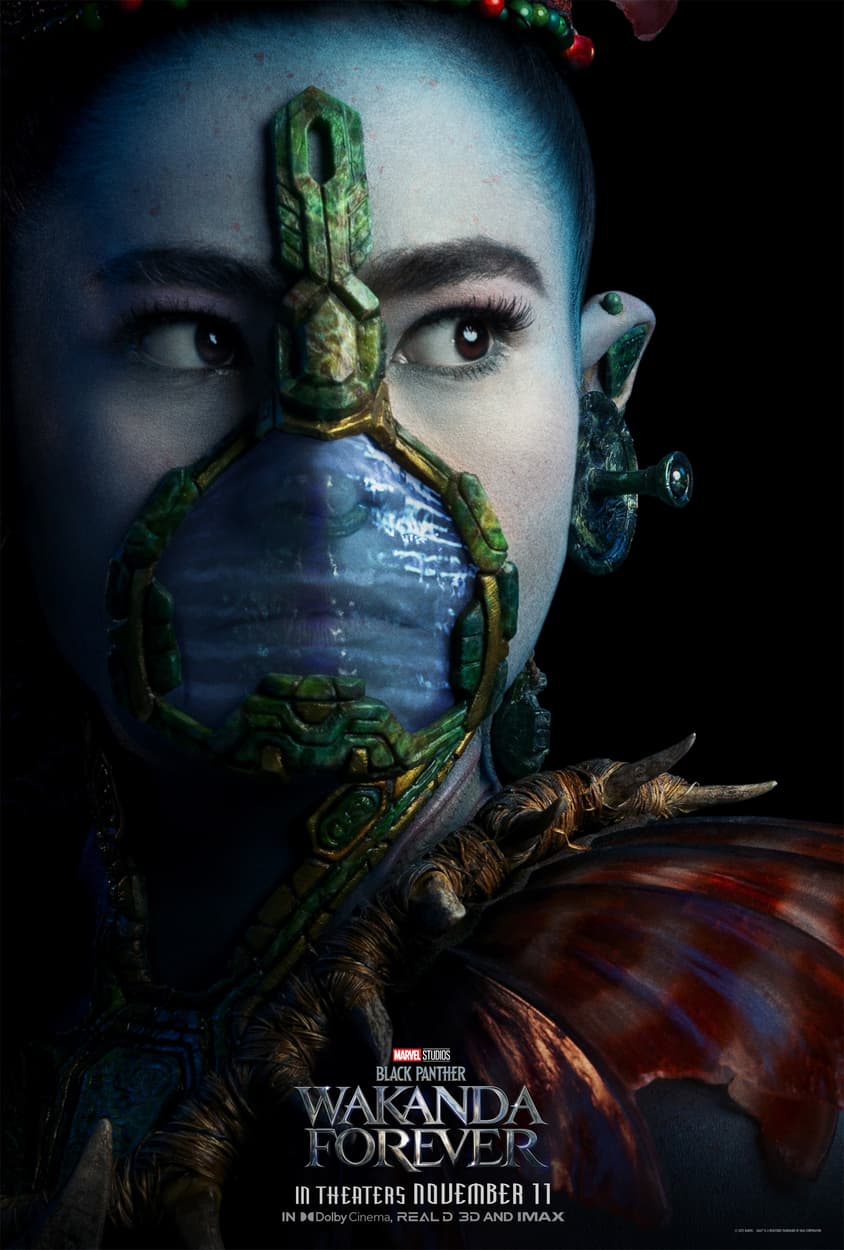
In time, their work on the Talokanil became the element of the film they're proudest of. "I'll be honest: I'm most proud of the Talokanil, because I think one thing that Black Panther, the first one, did is it came out and one journalist wrote, 'This is a love letter to Black hair.' So I wanted to, again, do a love letter to Black hair, but it's great that we can take on the Mayan culture, the Latin culture, and open up a whole different culture, a culture that hasn't really been seen on camera," Friend shared. "You know, it's so funny; the other day, I had dinner with somebody who is a student of Mayan culture, and she was so excited to talk to me because she was like, 'You guys really did it right,' and that means the world to me. To sit next to her and she told me that we did it right, that we made her culture—we made Latin culture—proud. That's everything. That's why we do these movies and that's why we do it with such accuracy. Plus, I want to point out one other thing: all of the stunt people that were used in this movie also were of Latin descent... We really covered every detail, and all of those things are important to Marvel and us personally as artists."
"I'm going to echo that," Harlow agreed. "Certainly, when you're dealing with a culture and a heritage, you want to make sure that—regardless of whether your makeup looks interesting—it's culturally accurate. We had a Mayan specialist, Dr. [Gerardo] Aldana, who would advise us on—because certainly, there's been other films that have dealt with the Mayan culture and maybe didn't get it as culturally accurate as they should have. We didn't want to go down that road. We didn't want to put something on camera just because it looked neat, just because it was a fun makeup, at least for us."
"So I would run everything by Dr. Aldana, from the hieroglyphics on the front of the rebreathers on their faces to the kind of jade that was used to the shapes that were used. All of that was run by him," he said. "If it was a look that I thought was fun but couldn't be traced back, then it was out. It was very much the same thing that I had done on the different tribes of Wakanda on the first film, which obviously carried over to this film. If a look couldn't be traced back, then it was out, because you want to respect the culture of the people that you're portraying… I don't think there's a makeup in there that I wasn't happy with."
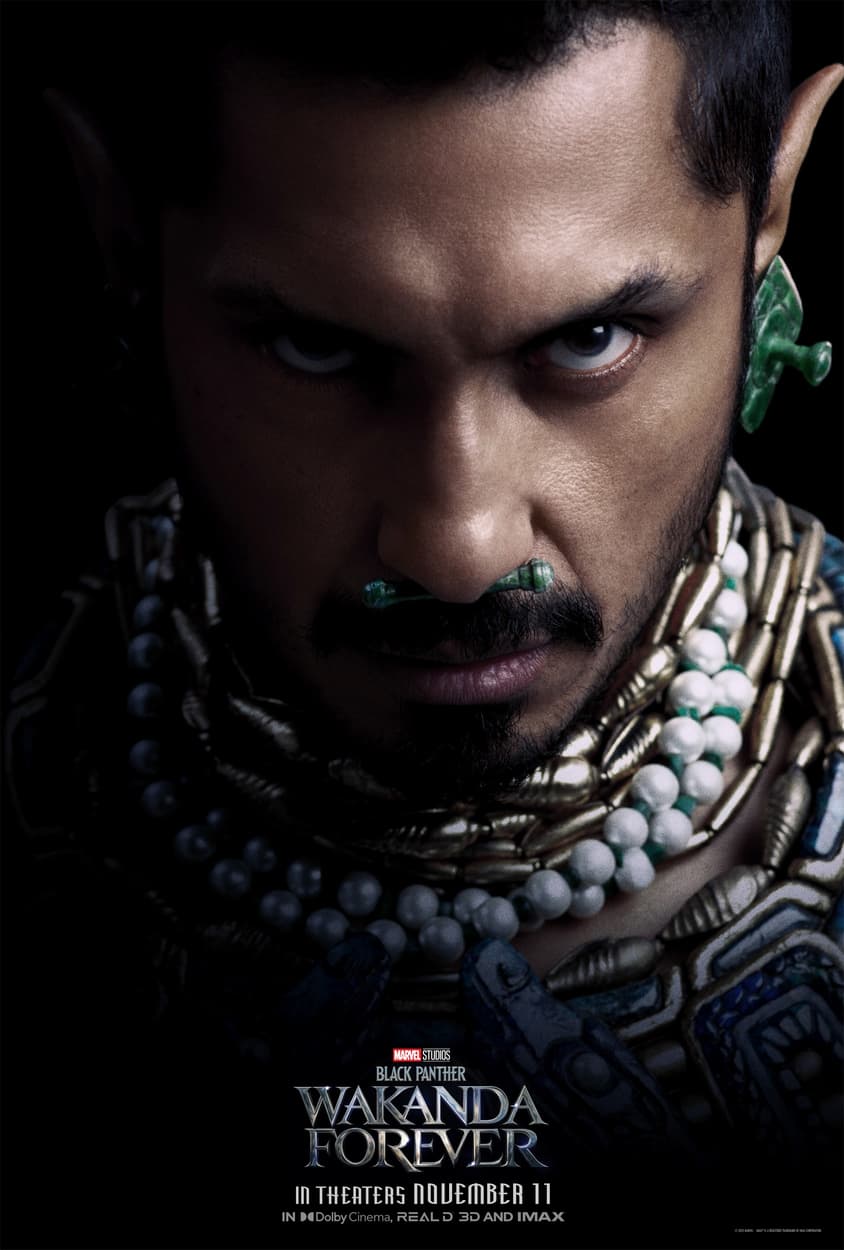
Additionally, Friend addressed the evolution of Oscar Award nominee Angela Bassett's look as Queen Ramonda from Black Panther to Black Panther: Wakanda Forever. "I mean, Angela Bassett. What can you say? She's a queen. She's really a queen. Even when you meet her, she's so royal. She's an actress I had never worked with before Wakanda and was really somebody who I wanted to work with. So I really went through and I looked at all her looks and I was like, 'What can I do that she hasn't done?'" she explained.
"So, in the beginning on the first one, in talking to Ryan, we really talked about, 'How about if she had locs?' I met his mother and Ryan Coogler's mother has beautiful long locs, and I was like, 'How about if we create locs for her? Like really long, beautiful, but keep them in light tones, keep them silver, keep them platinum, keep them blond. Really make her look like the goddess she is,'" she continued. "So I went and I pitched it to Angie, and she was kind of like, 'Huh...' I was like, 'Yup! I have this idea! I want to do these long locs.' And I showed her pictures and, once we started talking about it, she goes, 'I think that would really be cool, Camille.'"
"So we talked about it, but for the camera test, we didn't have the wig built yet, because the wig is a big build. It takes a long time. These are handmade locs. So we just had this horrible, horrible loc wig," she recalled. "Basically, the front of it was kind of gray, and she was like, 'This is ugly, this color.' So literally, I was like, 'Okay, the back of it is lighter.' We turn the wig around. This is for the camera test. We turn the wig around, we put the light part forward, and I was like, 'I need a wrap or a scarf.' So I just pinned it all up. We put the wrap around it and that's how we got it approved. Then, after that, I built the wig for it. So that's how the beginning of it started, just to give you a little back history on the beginning of it."
"Of course, in the opening scene [of Black Panther: Wakanda Forever], she has on the original wig from the first Black Panther. But how we got to her look in this one is, talking to Ryan, he really wanted Shuri and Ramonda to have—like, in West African culture, how people are in mourning and they shave their heads. So we're looking at, 'How would they look a year after they had shaved their heads?' So that's how we landed on the look that we had," she said. "So I wanted to keep her in the same color family, but I wanted to make her hair shorter. But I was like, 'What kind of style?' So I started looking at the pictures of [costume designer] Ruth Carter, what she does with the hat. I was like, 'If I keep her hair the same original color, but make her hair like a crown, I think it was something that would look really beautiful.' And that's what we did, and here we are."
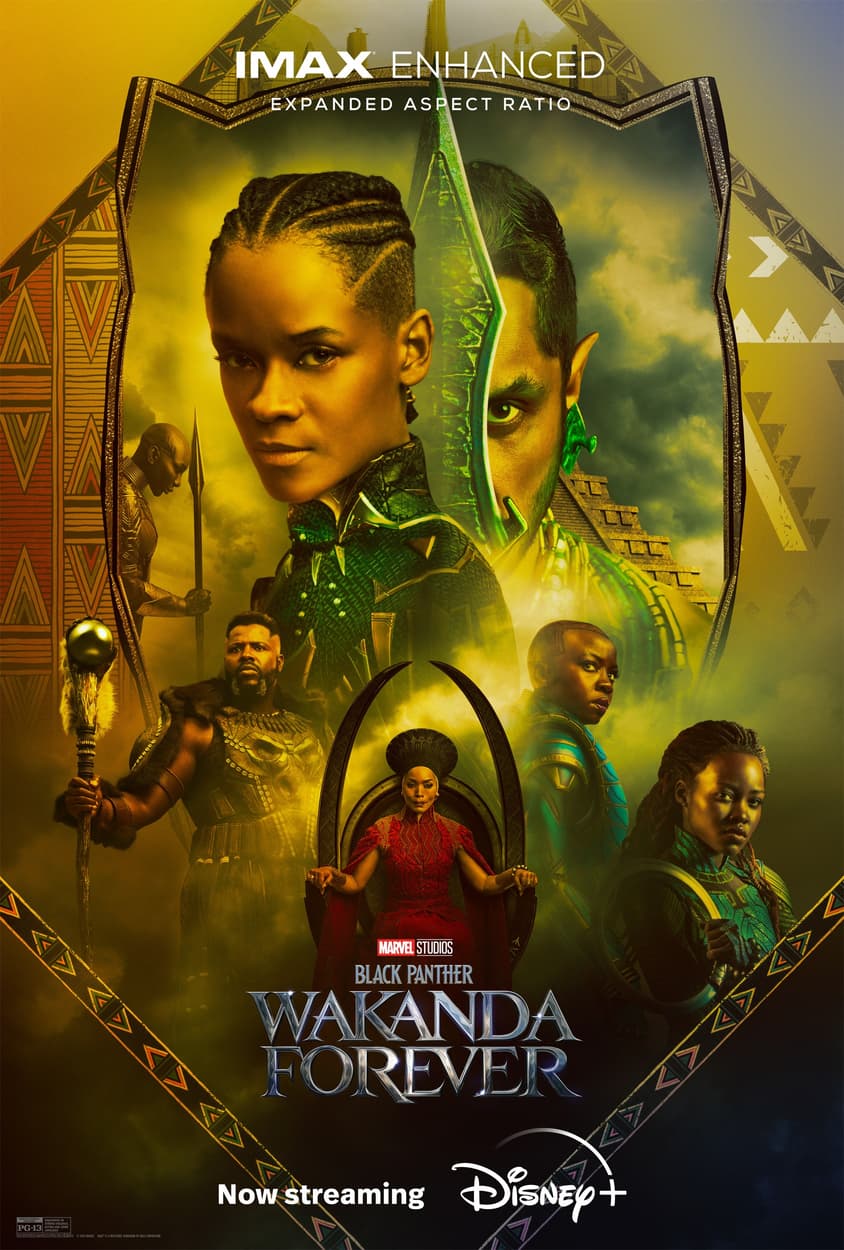
Black Panther: Wakanda Forever is now streaming on Disney+.
Follow Black Panther on Twitter, Instagram, Facebook, and find Marvel now on TikTok!
The Hype Box
Can’t-miss news and updates from across the Marvel Universe!
